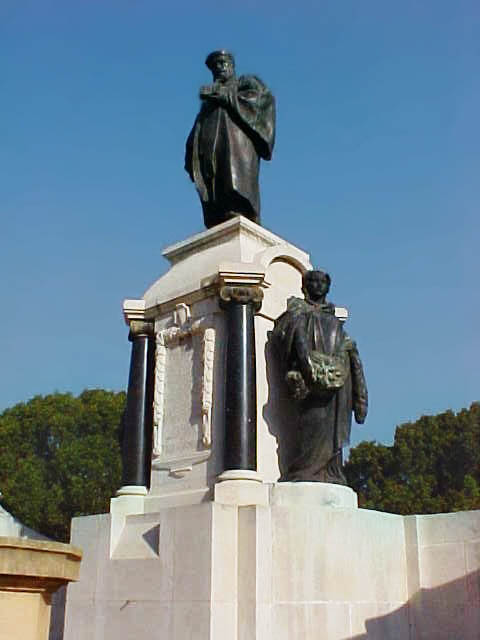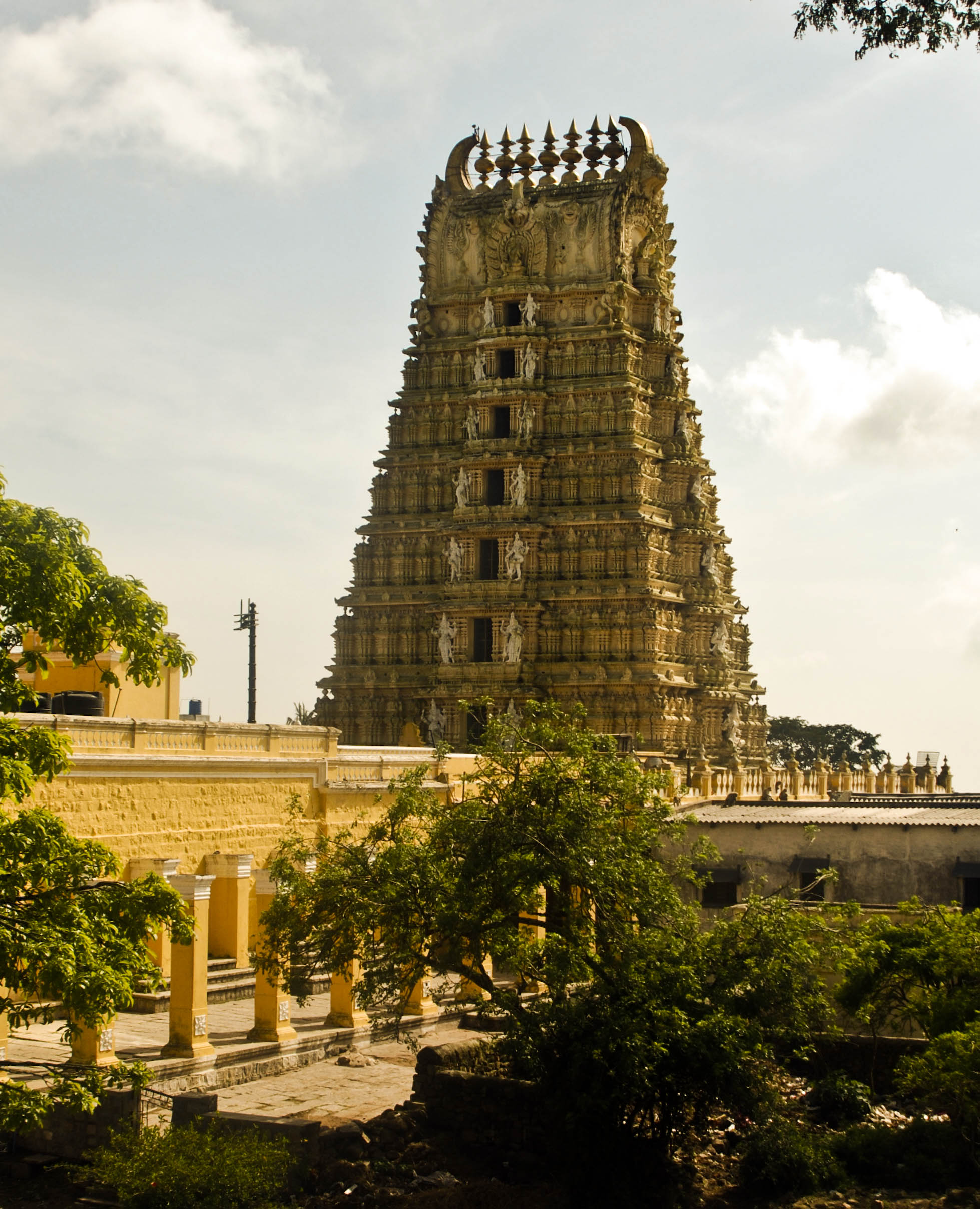|
Sosale Garalapury Sastry
Sosale Garalapury Sastry (November 1899 – 22 September 1955) was an Indian industrial chemist known for his work on the manufacture of sandalwood soap through the establishment of the Mysore soap factory in Bangalore. This earned him the nickname of Soap Sastry. He also served as a director of industries and commerce in Mysore State. Sastry was the son of an eminent Sanskrit scholar Sosale Ayya Sastry and was educated at Central College, Bangalore. Prior to the outbreak of World War I, sandalwood was auctioned by the forest department, exported mainly to Germany where sandalwood oil was distilled. This source of revenue stopped during the war and distillation in Mysore was examined by the director of industries Sir Alfred Chatterton who in turn passed on the problem to the Indian Institute of Science which worked on a steam distillation process. Sastry was sponsored by the Maharaja of Mysore to study soap making. He went to England and obtained an MSc in chemistry at the Univers ... [...More Info...] [...Related Items...] OR: [Wikipedia] [Google] [Baidu] |
Central College, Bangalore
Central College Bengaluru (1858) is one of the oldest colleges in India. This college was originally affiliated to University of Mysore in Mysore State. Rev. John Garrett was the first principal of the Central High School, which was afterwards renamed Central College. In 1964, with the reorganization of the Indian state and the formation of Karnataka, Central College was transferred to Bangalore University, a new university formed in 1965 to meet the needs of the people of Bengaluru. Initially, the two colleges of the city, the Central College (CC) and the University Visvesvaraya College of Engineering (UVCE) formed the nucleus of Bangalore University. History The Central College, Bengaluru was started in 1886 by the British government to award University Degrees. It was renamed as the Bangalore University from Central College, Bangalore by the University Grants Commission (India) on 10 July 1964 by the government under the then State of Mysore to consolidate institutions of high ... [...More Info...] [...Related Items...] OR: [Wikipedia] [Google] [Baidu] |
Alfred Chatterton
Sir Alfred Chatterton (10 October 1866 – 26 July 1958) was a British civil servant and civil engineer who worked in India and served as the first director of industries for the Madras Presidency (1900-1908) and as director of industries and commerce in Mysore (1908-1912). Chatterton was educated at Finsbury Technical College and then at the Central Institution, South Kensington. He went to India after qualifying the Indian Education Service The Indian Education Service or Indian Educational Service (IES) formed part of the British Raj between 1896 and 1924, when overseas recruitment ceased. It was an administrative organisation running educational establishments in British India, larg ... and worked in Madras from 1888 to 1900. He joined the Indian Educational Service and was Professor of Engineering, Madras, from 1888 to 1900. He then advised the government on industrial development and then moved to the Mysore State where he was involved in the founding of the Sandalwood oil d ... [...More Info...] [...Related Items...] OR: [Wikipedia] [Google] [Baidu] |
Indian Institute Of Science
The Indian Institute of Science (IISc) is a public, deemed, research university for higher education and research in science, engineering, design, and management. It is located in Bengaluru, in the Indian state of Karnataka. The institute was established in 1909 with active support from Jamsetji Tata and thus is also locally known as the ''"Tata Institute"''. It is ranked among the most prestigious academic institutions in India and has the highest citation per faculty among all the universities in the world. It was granted the deemed to be university status in 1958 and the Institute of Eminence status in 2018. History After an accidental meeting between Jamsetji Tata and Swami Vivekananda, on a ship in 1893 where they discussed Tata's plan of bringing the steel industry to India, Tata wrote to Vivekananda five years later: "I trust, you remember me as a fellow-traveller on your voyage from Japan to Chicago. I very much recall at this moment your views on the growth of ... [...More Info...] [...Related Items...] OR: [Wikipedia] [Google] [Baidu] |
University College London
, mottoeng = Let all come who by merit deserve the most reward , established = , type = Public research university , endowment = £143 million (2020) , budget = £1.544 billion (2019/20) , chancellor = Anne, Princess Royal(as Chancellor of the University of London) , provost = Michael Spence , head_label = Chair of the council , head = Victor L. L. Chu , free_label = Visitor , free = Sir Geoffrey Vos , academic_staff = 9,100 (2020/21) , administrative_staff = 5,855 (2020/21) , students = () , undergrad = () , postgrad = () , coordinates = , campus = Urban , city = London, England , affiliations = , colours = Purple and blue celeste , nickname ... [...More Info...] [...Related Items...] OR: [Wikipedia] [Google] [Baidu] |
Sharabha
Sharabha ( sa, शरभ, ,Tamil: ஸரபா, kn, ಶರಭ, Telugu: శరభ) or Sarabha is a part-lion and part-bird beast in Hindu history, who is described eight-legged and more powerful than a lion or an elephant, possessing the ability to clear a valley in one jump. In later literature, Sharabha is described as an eight-legged deer. The Shaiva scriptures narrate that god Shiva assumed the form of Sharabha to pacify Narasimha - the fierce man-lion avatar of Vishnu worshipped by the Vaishnava sect. This form is popularly known as Sharabeshwara ("Lord Sharabha") or Sharabeshwaramurti. The Vaishnavas refute the portrayal of Narasimha as being destroyed by Shiva-Sharabha and regard Sharabha as a name of Vishnu. The Vimathgira purana, Vathistabhaana purana, Bhalukka purana, and other puranas narrate that Vishnu assumed the form of the ferocious Gandabherunda bird-animal to combat Sharabha. Development of character and iconography In Sanskrit literature, Sharabha is initiall ... [...More Info...] [...Related Items...] OR: [Wikipedia] [Google] [Baidu] |
Mysore Sandal 2016
Mysore (), officially Mysuru (), is a city in the southern part of the state of Karnataka, India. Mysore city is geographically located between 12° 18′ 26″ north latitude and 76° 38′ 59″ east longitude. It is located at an altitude of above mean sea level. Mysore is situated at the foothills of Chamundi Hills about towards the southwest of Bangalore and spread across an area of . Mysore City Corporation is responsible for the civic administration of the city, which is also the headquarters of Mysore district and Mysore division. It served as the capital city of the Kingdom of Mysore for nearly six centuries from 1399 until 1956. The Kingdom was ruled by the Wadiyar dynasty, with a brief period of interregnum in the late 18th century when Hyder Ali and Tipu Sultan were in power. The Wadiyars were patrons of art and culture. Tipu Sultan and Hyder Ali also contributed significantly to the cultural and economic growth of the city and the state by planting ... [...More Info...] [...Related Items...] OR: [Wikipedia] [Google] [Baidu] |
Henrik Ibsen
Henrik Johan Ibsen (; ; 20 March 1828 – 23 May 1906) was a Norwegian playwright and theatre director. As one of the founders of modernism in theatre, Ibsen is often referred to as "the father of realism" and one of the most influential playwrights of his time. His major works include ''Brand'', '' Peer Gynt'', '' An Enemy of the People'', '' Emperor and Galilean'', '' A Doll's House'', '' Hedda Gabler'', '' Ghosts'', '' The Wild Duck'', '' When We Dead Awaken'', '' Rosmersholm'', and '' The Master Builder''. Ibsen is the most frequently performed dramatist in the world after Shakespeare, and ''A Doll's House'' was the world's most performed play in 2006. Ibsen's early poetic and cinematic play ''Peer Gynt'' has strong surreal elements. After ''Peer Gynt'' Ibsen abandoned verse and wrote in realistic prose. Several of his later dramas were considered scandalous to many of his era, when European theatre was expected to model strict morals of family life and propriety. Ibsen ... [...More Info...] [...Related Items...] OR: [Wikipedia] [Google] [Baidu] |
The Vikings At Helgeland
''The Vikings at Helgeland'' (''Hærmændene paa Helgeland'') is Henrik Ibsen's seventh play. It was written during 1857 and first performed at Christiania Norske Theater in Oslo on 24 November 1858. The plot takes place during the time of Erik Blood-axe (c. 930–934) in the north of Norway in historic Helgeland, a time in which Norwegian society was adjusting from the tradition of Old Norse Sagas to the new era of Christianity. It concerns the arrival of Ornulf, who with his seven sons is seeking his daughter, Dagny, and foster-daughter, Hjordis, who were abducted and married by Sigurd and Gunnar, respectively. Tragedy compounded by conceptions of honour and duty lead to the deaths of all of Ornulf's sons, Sigurd (who is killed by Hjordis), and Hjordis (by suicide). The plot is reminiscent of the Germanic myth of Sigmund and Brynhilde. Main characters * Sigurd the Strong, Sea-King * Gunnar, rich farmer of Helgeland * Ørnulf, Icelandic Chieftain * Hjørdis, Ørnulf's foster ... [...More Info...] [...Related Items...] OR: [Wikipedia] [Google] [Baidu] |
A Doll's House
''A Doll's House'' ( Danish and nb, Et dukkehjem; also translated as ''A Doll House'') is a three-act play written by Norwegian playwright Henrik Ibsen. It premiered at the Royal Theatre in Copenhagen, Denmark, on 21 December 1879, having been published earlier that month. The play is set in a Norwegian town circa 1879. The play concerns the fate of a married woman, who at the time in Norway lacked reasonable opportunities for self-fulfillment in a male-dominated world, despite the fact that Ibsen denied it was his intent to write a feminist play. It was a great sensation at the time, and caused a "storm of outraged controversy" that went beyond the theatre to the world of newspapers and society. In 2006, the centennial of Ibsen's death, ''A Doll's House'' held the distinction of being the world's most performed play that year. UNESCO has inscribed Ibsen's autographed manuscripts of ''A Doll's House'' on the Memory of the World Register in 2001, in recognition of their hist ... [...More Info...] [...Related Items...] OR: [Wikipedia] [Google] [Baidu] |
1899 Births
Events January 1899 * January 1 ** Spanish rule ends in Cuba, concluding 400 years of the Spanish Empire in the Americas. ** Queens and Staten Island become administratively part of New York City. * January 2 – **Bolivia sets up a customs office in Puerto Alonso, leading to the Brazilian settlers there to declare the Republic of Acre in a revolt against Bolivian authorities. **The first part of the Jakarta Kota–Anyer Kidul railway on the island of Java is opened between Batavia Zuid ( Jakarta Kota) and Tangerang. * January 3 – Hungarian Prime Minister Dezső Bánffy fights an inconclusive duel with his bitter enemy in parliament, Horánszky Nándor. * January 4 – **U.S. President William McKinley's declaration of December 21, 1898, proclaiming a policy of benevolent assimilation of the Philippines as a United States territory, is announced in Manila by the U.S. commander, General Elwell Otis, and angers independence activists who had fought a ... [...More Info...] [...Related Items...] OR: [Wikipedia] [Google] [Baidu] |





.jpg)
